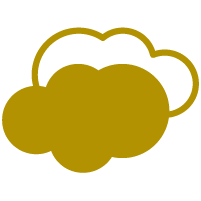By Head Gardener, Daniel Cartwright
Bees – and other pollinators – are so important to the garden and wider environment. We need bees to pollinate the plants we eat and all the other trees and flowers that make up the various habitats needed to support life.
Like so many plants and animals, many bee species are under threat due to the use of harmful pesticides and climate change. Yet, there’s so much we can do as gardeners to help mitigate these negative effects. So, here are my top three tips you should consider when planting a bee-friendly border.
Pick plants with simple, open flowers
Big, frilly double flowers like those you might find on a reflexed chrysanthemum or pompom dahlia are difficult for pollinators to reach; the nectar is often inaccessible, hidden deep within the flower beneath layers and layers of petals.
Single flowers are much better, but that doesn’t mean you have to ignore old favourites. There are loads of really good single chrysanthemums and dahlias to choose from that are just as good value in the garden. My favourite is the crimson-flowered Dahlia ‘Bishop of Auckland’, which we’ve grown in pots and the Walled Garden for years now.
Look for flowers with all their petals arranged around the outside of the bloom – a bit like a daisy – with a nice open centre with all the stamens visible and present.
Pick plants that flower for a long time
There’s a place in every garden for plants which come and go with a bang, but repeat flowering plants are essential for keeping pollinators happy with a good source of food over a prolonged period of time.
Perennial wallflowers are famously long-flowering, seeming never to stop at all! Erysimum ‘Bowles Mauve’ is a reliable favourite and rightly grown widely in gardens up and down the land.
Verbena bonariensis is another good example with its purple flowers held atop long, slender stems.
Don’t forget plants that have two seasons too. Most spring-flowering bergenias, for example, will flower again in the autumn if they’re dead-headed after the first flush is over. So, get your secateurs at the ready, get dead-heading, and keep your perennials flowering for longer!
Pick plants which flower in autumn and winter
Cast an eye over your garden outside of spring and summer and consider what there is for early pollinators to feed on.
Ivy is a staple. It flowers from September to November when there is often little else around. Juvenile ivy won’t flower, so you have to let it mature and resist the urge to prune it. Of course, it’s tough as old boots, so pick a spot where nothing else will grow and let it romp away.
There’s plenty else to choose from besides. Just take a stroll through our Winter Garden in January or February and you’ll see flowering hellebores, winter aconites and mahonia. All provide plenty of colour just when you need it and bring out plenty of pollinators on a sunny day (yes, we really do get them even in the winter!).
 10°C
10°C

